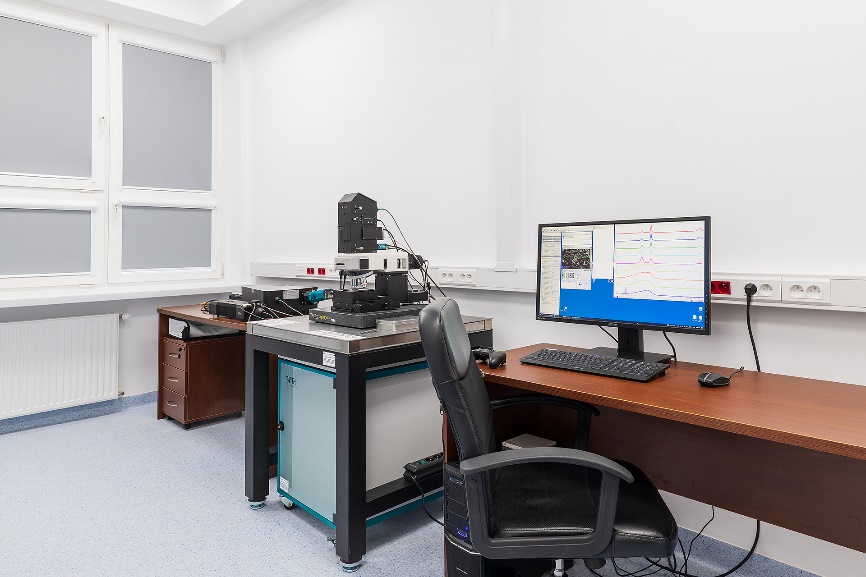Raman spectroscopy
Raman spectroscopy is a versatile analytical technique that enables qualitative as well as quantitative analysis of materials. The Raman effect is based on the incoherent scattering of the monochromatic incident beam by the sample. The interaction of photons with the material results in the absorption of a quantum of energy corresponding to the difference in vibrational energy levels, leading to specific changes in the scattered wavelength. The measured change is presented as a Raman spectrum, characteristic of the examined substance. With that unique spectral “fingerprint”, almost any chemical compound can be identified. The method is non-destructive, non-contact and does not require sample preparation, so it can be carried out on materials in different states of matter – bulk solids, powders, liquids. Raman spectroscopy is most commonly used in the medical, chemical and pharmaceutical sectors, for the study of semiconductors, and in widely understood materials science.
Research offer of the Non-Destructive Spectroscopy Research Lab:
Research offer of the Non-Destructive Spectroscopy Research Lab:
- Ultrafast and non-destructive structural testing (with a minimum acquisition time of a single spectrum <1 ms, it is possible to determine the chemical composition of the tested material).
- Point and linear Raman measurements in the X-Y plane.
- Confocal linear Raman measurements in the Z-axis.
- Raman imaging at very high spatial resolution. 2D Raman mapping in the X-Y plane determines the homogeneity of the sample under investigation, the presence and distribution of phases on the sample surface and the weight ratio of these phases.
- Depth profiling (in the Z-axis) enables the collection of a set of spectra obtained from different depths of the sample.
- High-temperature in-situ measurements up to 1000 °C allow observation of phase transformations or corrosion behaviour in a given temperature cycle.

Examples of performed research:
- Identification of materials
- Determination of homogeneity of thin films obtained by different surface engineering techniques
- Phase analysis of complex materials – identification of phases, determination of their weight ratio and spatial distribution
- Imaging of stress distribution in a material
- Investigation of the effect of ion implantation on structural changes in materials used in nuclear reactors and determination of the level of structural defects
- Identification of organic materials and their characterisation (crystallinity, density, conformation)
- Studies on the condition, degradation, authenticity and ageing of works of art.
- Investigations of archaeological artefacts regarding their origin

Contact
Non-Destructive Spectroscopy Research Lab
dr hab. inż. prof. NCBJ Łukasz Kurpaska
Head of LBM
lukasz.kurpaska@ncbj.gov.pl
dr inż. Magdalena Gawęda
magdalena.gaweda@ncbj.gov.pl
phone number: (+48) 22 273 25 26